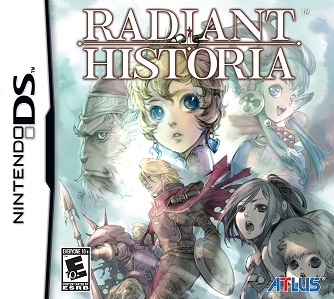Radiant Historia is a role-playing video game developed and published by Atlus for the Nintendo DS. The game's development team mostly consists of Atlus staff who previously worked on Megami Tensei games like Persona 3,Strange Journey, Nocturne and the Etrian Odyssey series. The development team also includes other members who had previously worked on Radiata Stories. The game was released on November 3, 2010 in Japan, and in North America on February 22, 2011.
is a role-playing video game developed and published by Atlus for the Nintendo DS. The game's development team mostly consists of Atlus staff who previously worked on Megami Tensei games like Persona 3,Strange Journey, Nocturne and the Etrian Odyssey series. The development team also includes other members who had previously worked on Radiata Stories. The game was released on November 3, 2010 in Japan, and in North America on February 22, 2011.
Gameplay
Time travel
The game gives a unique take on the concept of non-linear branching storylines, which it combines with the concepts of time travel andparallel universes, similar to the Chrono series. Radiant Historia takes it much further by giving players the freedom to travel backwards and forwards through a timeline to alter the course of history, with each of their choices and actions having a major impact on the timeline. The player can return to certain points in history and live through certain events again to make different choices and see different possible outcomes on the timeline.
The player will be using the ability to travel through time and space throughout the game. The player will be changing the past to create a “true” future, and the game has the player travel through time and space as the player switches between parallel worlds. The game has many possible parallel endings.
Combat
The enemies are visible on the fields before an engagement and the player may choose to fight or avoid them in open combat. A battle begins when the party comes into contact with the enemies, or if a story event initiates a confrontation.
The battle system makes use of a positioning system called the 'Grid System'. Enemies are placed on a 3 x 3 grid, with each enemy standing in a single slot, except for some large enemies spanning multiple slots. If the player attacks an enemy who is in a grid space near the attacking character, the enemy will incur greater damage. However, the player will also be open to greater damage.
Some attacks can move enemies around the grid, stacking them on the same slot until an enemy's turn comes and consecutive attacks on this group of enemies hit all of them. Despite being a turn-based combat system each member of the party can switch turns with the others and even with enemies, giving more freedom to the player to perform combos and deal further damage to enemies, but having its risks too, as a party member who switches turns become more vulnerable until becoming able to move again.








0 comments:
Post a Comment